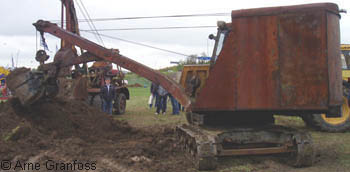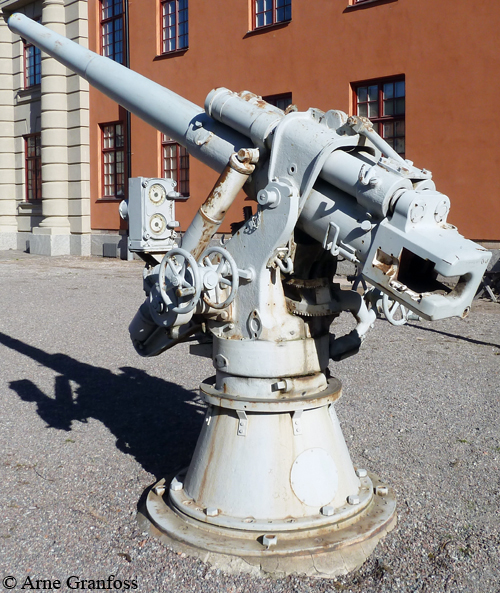Swedish trade in Norden

 UNDER CONSTRUCTION Version 0.31
UNDER CONSTRUCTION Version 0.31
|
Sweden in World War II - across borders
|
 |
![]()
![]()
A meeting between the Nordic countries Denmark, Finland, Norway and Sweden took place in Copenhagen 17 September 1939. Most of the agenda concerned the trade problems due to the war.
All countries had had losses of ships and crews after German attacks. The communiqué from the meeting confirmed the countries determination to be neutral, and also
that they claimed their right to trade with all states. [s19]
![]()
On 30 November 1939 the Soviet Union attacked Finland. Even though Sweden officially continued to be neutral, things happened.
 Sweden's and Finland's governments accepted, on 25 January 1940, to establish a direct truck route between Umeå in Sweden and Vasa in Finland. The route, 120 kilometres, ran foremost on sea ice. During preparations one Swedish truck with plow fell through the ice, and one man was killed. It was a tough job to prepare the road over rough sea ice, and traffic didn't reach large quantities until late February. It lasted until mid March. The ice road truckers with 779 trucks brought 1,441 metric tonnes to Vasa, including among others 96,000 litres of petrol and seven British 84 mm guns. The small trucks, common in the late 1930s, hauled some 2,000 truckloads. On a few occassions the cargo was unloaded on unsafe ice, and carried on later when the sea ice was more solid. [s59]
Sweden's and Finland's governments accepted, on 25 January 1940, to establish a direct truck route between Umeå in Sweden and Vasa in Finland. The route, 120 kilometres, ran foremost on sea ice. During preparations one Swedish truck with plow fell through the ice, and one man was killed. It was a tough job to prepare the road over rough sea ice, and traffic didn't reach large quantities until late February. It lasted until mid March. The ice road truckers with 779 trucks brought 1,441 metric tonnes to Vasa, including among others 96,000 litres of petrol and seven British 84 mm guns. The small trucks, common in the late 1930s, hauled some 2,000 truckloads. On a few occassions the cargo was unloaded on unsafe ice, and carried on later when the sea ice was more solid. [s59]
![]()
![]()
![]()
In March 1940 a special trade agreement was closed between the neutral Norway and the war-faring Britain and Germany. Britain knew and had accepted the
agreed export from Norway to Germany, and Germany knew about this. One part of the agreement was a specified amount of iron ore from Sweden, shipped via Narvik in northern Norway. (In the summertime the iron ore was shipped from Swedish ports in the Baltic Sea, but these waters froze in the winter.) [s01]
(Several German merchant vessels sailed along the Norwegian coast in late March and early April 1940, and the ships that loaded iron ore in Narvik had double sets of crews to be able to shorten the time in the harbour. Among others the large German whaling factory ship, sailing under USA flag, arrived to Narvik - loaded with German troops and ammunition. So, there were many Germans in Norway when the attack took place in the morning of 9 April. German businessmen and others were in several Norwegian cities and towns. [s01] )
![]()
Britain made trade agreements with several countries around the early 1940, among others with Norway and Denmark (on 2 April). The reason was to decrease the countries export
of raw material to Germany. The Swedish iron ore, shipped via Narvik in Norway, was the most important to decrease. [s19]
![]()
In December 1939 Norway ordered 25 40mm Bofors guns, but only 12 were delivered in March 1940. [s23]
 Among the armament of the fortresses in the Oslofjorden were 15 centimetres Bofors guns and 40 millimetres Bofors anti-aircraft guns. There were 7 Bofors guns near the opening of Oslofjorden. (One fort managed to shoot four sharp granades in six minutes (all missed), then the fog got thick so they stopped shooting. Another fort fired one warning shot, and when they (with their poor training) after around twenty minutes had managed to load sharp ammunition - the German warships had passed.) [s56]
Among the armament of the fortresses in the Oslofjorden were 15 centimetres Bofors guns and 40 millimetres Bofors anti-aircraft guns. There were 7 Bofors guns near the opening of Oslofjorden. (One fort managed to shoot four sharp granades in six minutes (all missed), then the fog got thick so they stopped shooting. Another fort fired one warning shot, and when they (with their poor training) after around twenty minutes had managed to load sharp ammunition - the German warships had passed.) [s56]
(My note: Why didn't they continue to shoot for a while - they could have made a hit or two?)
![]()
During the night between 8 and 9 April 1940, the Norwegian destroyer Ægir was in Stavanger in western Norway. The destroyers captain was visited by police at 1 o'clock during the night by policemen, and the aid of the navy was wanted. In the area was a German ship that according to the papers was fully loaded with coke, even on the deck on top of the cargo rooms. The Norwegian customs officers found it hard to understand, since the ship was so high in the water. That much coke ought to be heavier. Around 4 o'clock in the morning the captain of Ægir got a radio message about foreign warships that entered the fjord south of Oslo. After several activities (that I will not describe here) the captain decided around 7 o'clock to sink the German ship, with the destroyers only gun - a Swedish Bofors 40mm gun. (Some 50 shots were fired, but the German ship didn't sink until in the afternoon.) Around 8 o'clock the first German planes appeared, and Ægirs only gun could not fend off the attackers. The German ship was loaded with among others guns, cars and ammunition. (A note about the Norwegian defence politics before the war: The destroyer was allowed only to use 80 rounds of gun ammunition for practice under a period of one whole year - with a gun that could fire 120 rounds per minute.) [s47]
![]()
A period after the occupation of Norway, Norway was only allowed to import food from Germany and areas occupied by Germany. [s10]
![]()
![]()
In 1942 a Norwegian shipowner was on a business visit to Stockholm. During the visit in Stockholm he also had contacts with the Norwegian legation and couriers from London. [s46]
![]()
![]()
On 24 January 1945 the illegal Danish newspaper Frit Danmark reported that Danish-Swedish Samhandel (trade) had practically been stopped by the Germans.
It was forbidden to begin new negotiations for trade, and only existing agreements could in some extent be fulfilled. [s13]
![]()
2013-07-24. www.granfoss.se. Text/pictures: Arne Granfoss